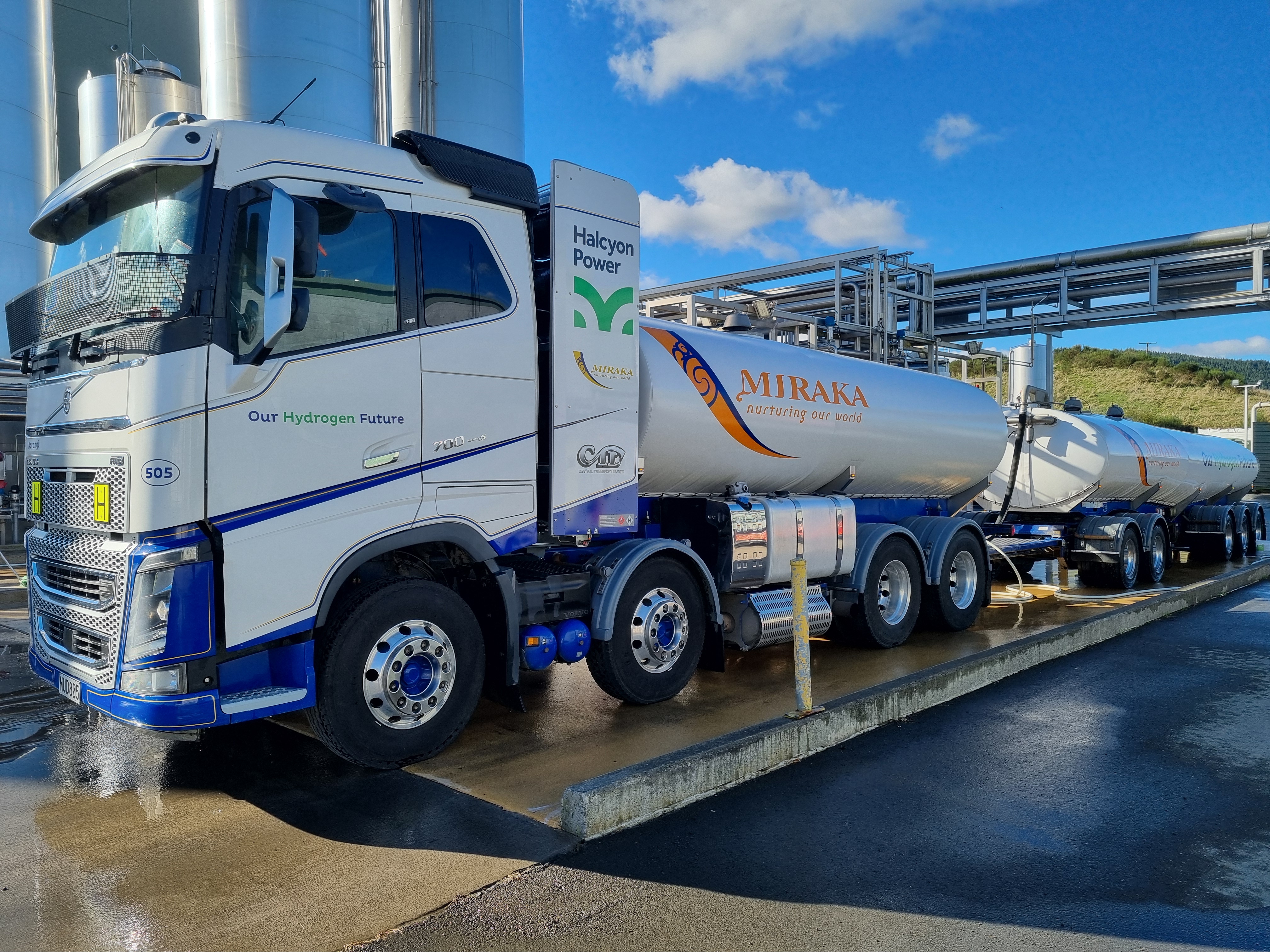
Transport Minister Simeon Brown and Minister of Climate Change Simon Watts have announced the Low Emissions Heavy Vehicle Fund, or LEHVF, which has $27.5 million in the kitty.
The LEHVF money will go towards offsetting the purchase of, as the name implies, low and zero-emission heavy vehicles. That's because of high upfront costs and the unknown total cost of ownership being the main barriers to uptake of LEHVs, the ministers said.
Now, organisations can offset up to a quarter of the vehicles' purchase price. This is in the context of heavy vehicles generating around 18% of New Zealand's greenhouse gas emissions.
Watts pointed to estimates suggesting that switching 500 diesel-only vehicles to LEHVs would remove 366,622 tonnes of carbon dioxide equivalent emissions in NZ.
To be eligible, new vehicles to be purchased have to be battery electric, hydrogen fuel cell electric, or hydrogen diesel dual fuel like the Miraka milk tanker, and have a gross vehicle mass (GVM) of 5.9 tonnes or higher.
Curiously, $5 million of the total in the fund "has been earmarked for low-emissions heavy vehicles: hydrogen-diesel dual fuel and plug-in diesel-electric hybrid vehicles that meet at least 30% emissions reductions," the Minister said.
We asked Te Tari Tiaki Půngao/The Energy Efficiency and Conservation Authority (EECA) chief executive Marcos Pelenur what that all means.
"When the programme was initially designed, dual fuel hybrid vehicles were excluded due to there being insufficient evidence that the technology had advanced beyond the demonstration phase," Pelenur explained.
"Following EECA’s successful trial of dual fuel hybrids with HW Richardson, the decision was made to expand eligibility of this fund to include dual fuel hybrids," he added.
In money terms, for the first year of the LEHVF, grants are capped at $4 million per vehicle importer/supplier, Pelenur said. Per vehicle operator, the amount is $1 million.
Caps for the following year will be set by 31 March 2025 and announced by the end of April 2025, he added.
"There are also capped maximums on funding for each vehicle category, including hydrogen-diesel and diesel-electric vehicles, depending on gross vehicle mass (GVM) and vehicle class."
"These categories are based on licensing and energy usage," Pelenur said.
Heavy vehicles using a hybrid propulsion system with small batteries, and not the larger plug in ones that require separate charging, are not eligible for funding.
Pelenur explained such diesel electric heavy vehicle were excluded as the technology used has a modest emissions impact and only generates a maximum of 20% fuel reduction.
The LEHVF initiative isn't set in stone, and will be reviewed six months after launch.
Its criteria and funding caps could be changed, which will be communicated to the market in advance of them taking effect, Pelenur said.
8 Comments
I would say these were intended to be aid for by the carbon credit sales , which has been swiped by Willis.
So more payback for their donors?
EV Subsides for Truckies but none for the general public. Simeon Brown really is the worst.
Worth noting that Reliance Trucking who does container cartage round Auckland have been running a couple EV trucks round town for a while. Saw one once and didn't click till it moved off from the lights in silence. Very cool.
Ye
I'm really struggling to see how H2 fuel is an economic alternative. Anyone care to englighten with a full view of range, power, refill times etc?
Why would anyone want to run hydrogen fuel cells when the running costs are more than double the battery electric cost?
Sure you get some range, but when do they tell us the story about the opex?
Hyundai Puts Mighty Fuel Cell Truck into Pilot Test in New Zealand (hiringaenergy.com)
Why bother with hydrogen infrastructure when you can run trucks on biomass and skip the H2 generation and leaky reticulation problems? See 14:18 onwards
A Hundred Years of Firewood-Powered Vehicles (documentary) - YouTube
IKR.
People bang on about quicker refilling times and better range on a full tank than a similar sized BEV - to me they sound like oil industry shills or bogans that lfeel they can't do without a rumbling exhaust. I'm not confident about the better range given that a tank needs to be huge with thick walls to withstand the high pressure required to store enough H2.
I would like to see more (truely) impartial information on ammonia as a fuel for internal combustion engines.
Yes was struck by the difference between a diesel bus , and a electric one, whilst sitting at the lights. I wonder how long before having noisy smelly diesel buses and trucks in our urban streets is seen as unacceptable.
As for the subsidy, I would hope EECA would have some integrity in this regard. I suspect it has been in the pipeline since the last govt, in addition to the car subsidy.
Of Brown I have no expectations of integrity, intelligence, or even willingness to consider the issues. Watts, I'm not sure of yet.
It's good that the funding is at least a bit open ended in definition, given how fast the technology is evolving.
One of the latest off the blocks are Ammonia fuels cells that are beyond demonstration status and making some inroads in maritime applications. Amogy were running test systems in tractors and such, so who knows if it's also going to filter across to land transport.

We welcome your comments below. If you are not already registered, please register to comment.
Remember we welcome robust, respectful and insightful debate. We don't welcome abusive or defamatory comments and will de-register those repeatedly making such comments. Our current comment policy is here.